
HOME
INTRO
SYMBOLS
ALMANAC
ECONOMY
GEOGRAPHY
STATE MAPS
PEOPLE
GOVERNMENT
FORUM
NEWS
COOL SCHOOLS
STATE QUIZ
STATE LINKS
BOOK STORE
MARKETPLACE
NETSTATE.STORE
NETSTATE.MALL
GUESTBOOK
CONTACT US
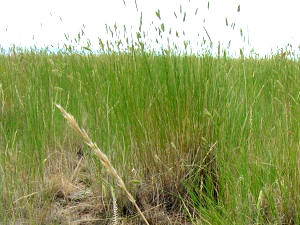
State Grass: Western Wheat Grass
Sheri Hagwood @ USDA-NRCS PLANTS Database
South Dakota Law
The following information was excerpted from the South Dakota Codified Laws , title 1, chapter 1-6, section 1-6-13.
TITLE 1 STATE AFFAIRS AND GOVERNMENT
CHAPTER 1-6 STATE EMBLEMS
1-6-13 State grass.
1-6-13. State grass. Western wheat grass (Agropyron smithii) is hereby designated as the state grass for the State of South Dakota.
Source: SL 1970, ch 13.
Sources...
The State of South Dakota. South Dakota Codified Laws. Pierre: State of South Dakota. Web. 12 Jul 2011. .
Shearer, Benjamin F. and Barbara S. State Names, Seals, Flags and Symbols: A Historical Guide Third Edition, Revised and Expanded. Westport, Conn: Greenwood Press, 3 Sub edition, 2001.
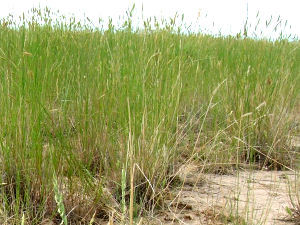
State Grass: Western Wheat Grass
Sheri Hagwood @ USDA-NRCS PLANTS Database
Additional Information
Pascopyrum smithii (Western wheatgrass): Lady Bird Johnson Wildflower Center: Native Plant Database, University of Texas.
Western wheatgrass Pascopyrum smithii: Your Garden Show: Citizen Science.
Western wheatgrass Pascopyrum smithii: S.D. Department of Game, Fish and Parks, Division of Wildlife, Pierre, S.D.
Pascopyrum smithii (Rydb.) A. Löve - western wheatgrass: USDA, NRCS. 2011. The PLANTS Database (http://plants.usda.gov, 13 July 2011). National Plant Data Team, Greensboro, NC 27401-4901 USA.
State grasses: Complete list of official state grasses from NETSTATE.COM.
More symbols & emblems: Complete list of official South Dakota state symbols from NETSTATE.COM.
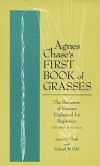
Agnes Chase's First Book of Grasses, by Lynn G. Clark and Richard W. Pohl. 127 pages. Publisher: Smithsonian; 4th Edition (April 17, 1996) For almost seventy-five years, Agnes Chase's First Book of Grasses has been the classic guide to the structure of this complex group of plants. Clearly written and copiously illustrated with line drawings, the book is accessible to those with little or no botanical training, yet it also is respected by botanists as an authoritative introduction to agrostology.
Highly recommended for "wannabe" botanists and plant lovers, this book divides the complexity of grasses into twelve relatively simple lessons. The book now has been thoroughly revised to reflect current scientific knowledge, nomenclature, and classification.
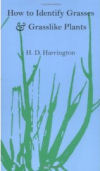
How To Identify Grasses & Grasslike Plants, by H.D. Harrington. 164 pages. Publisher: Publisher: Swallow Press; 1st ed edition (January 1, 1977) There is no easy was to identify grasses. And no one understood this better than H.D. Harrington, who observed thousands of students struggle and learn.
His clear, concise, and well-organized guide will continue to be a basic and essential text for use in the classroom or in the field. The book contains over 500 drawings and an illustrated glossary.

Manual of Grasses for North America, Edited by Mary E. Barkworth, Laurel K. Anderton, Kathleen M. Capels, Sandy Long, and Michael B. Piep. 640 pages. Publisher: Utah State University Press; 1 edition (September 30, 2007) Grasses are the world's most important plants. They are the dominant species over large parts of the earth's land surface, a fact that is reflected in the many different words that exist for grasslands, words such as prairie, veldt, palouse, and pampas to mention just a few. As a group, grasses are of major ecological importance, as soil binders and providers of shelter and food for wild animals, both large and small. Some grasses, such as wheat, rice, corn, barley, rye, tef, and sugar cane are major sources of calories for humans and their livestock; others, primarily bamboos, are used for construction, tools, paper, and fabric. More recently, the seed catalogs that tantalize gardeners each winter have borne witness to an increasing appreciation of the aesthetic value of grasses.
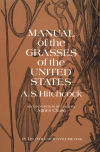
Manual of the Grasses of the United States Volume 1, by A.S. Hitchcock. 525 pages. Publisher: Dover Publications; 2 edition (June 1, 1971) Volume 1 of the basic study of American grasses, both indigenous and escapes, cultivated and wild. Over 1400 species. Full descriptions, information. Total in set: over 1100 maps, illustrations. "A definitive work invaluable to both amateur and professional botanists." -- American Reference Books Annual. This volume revised by Agnes Chase.
Manual of the Grasses of the United States Vol. 2, by A.S. Hitchcock. 525 pages. Dover Publications; 2nd edition (June 1, 1971) Volume 2 of the basic study of American grasses, both indigenous and escapes, cultivated and wild. Over 1400 species. Full descriptions, information. Total in set: over 1100 maps, illustrations. "A definitive work invaluable to both amateur and professional botanists." -- American Reference Books Annual. This volume revised by Agnes Chase.



